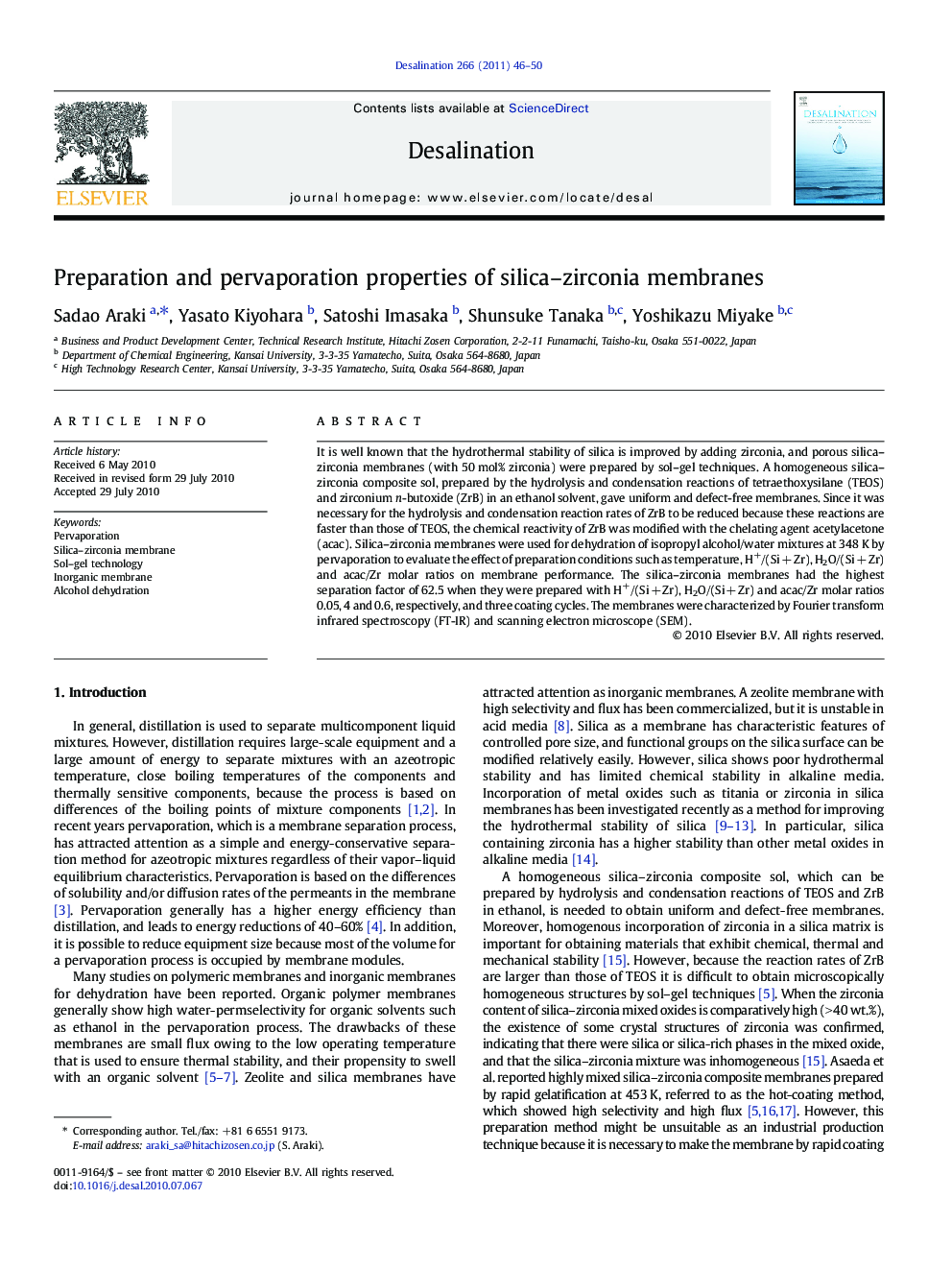| Article ID | Journal | Published Year | Pages | File Type |
|---|---|---|---|---|
| 625602 | Desalination | 2011 | 5 Pages |
It is well known that the hydrothermal stability of silica is improved by adding zirconia, and porous silica–zirconia membranes (with 50 mol% zirconia) were prepared by sol–gel techniques. A homogeneous silica–zirconia composite sol, prepared by the hydrolysis and condensation reactions of tetraethoxysilane (TEOS) and zirconium n-butoxide (ZrB) in an ethanol solvent, gave uniform and defect-free membranes. Since it was necessary for the hydrolysis and condensation reaction rates of ZrB to be reduced because these reactions are faster than those of TEOS, the chemical reactivity of ZrB was modified with the chelating agent acetylacetone (acac). Silica–zirconia membranes were used for dehydration of isopropyl alcohol/water mixtures at 348 K by pervaporation to evaluate the effect of preparation conditions such as temperature, H+/(Si + Zr), H2O/(Si + Zr) and acac/Zr molar ratios on membrane performance. The silica–zirconia membranes had the highest separation factor of 62.5 when they were prepared with H+/(Si + Zr), H2O/(Si + Zr) and acac/Zr molar ratios 0.05, 4 and 0.6, respectively, and three coating cycles. The membranes were characterized by Fourier transform infrared spectroscopy (FT-IR) and scanning electron microscope (SEM).
